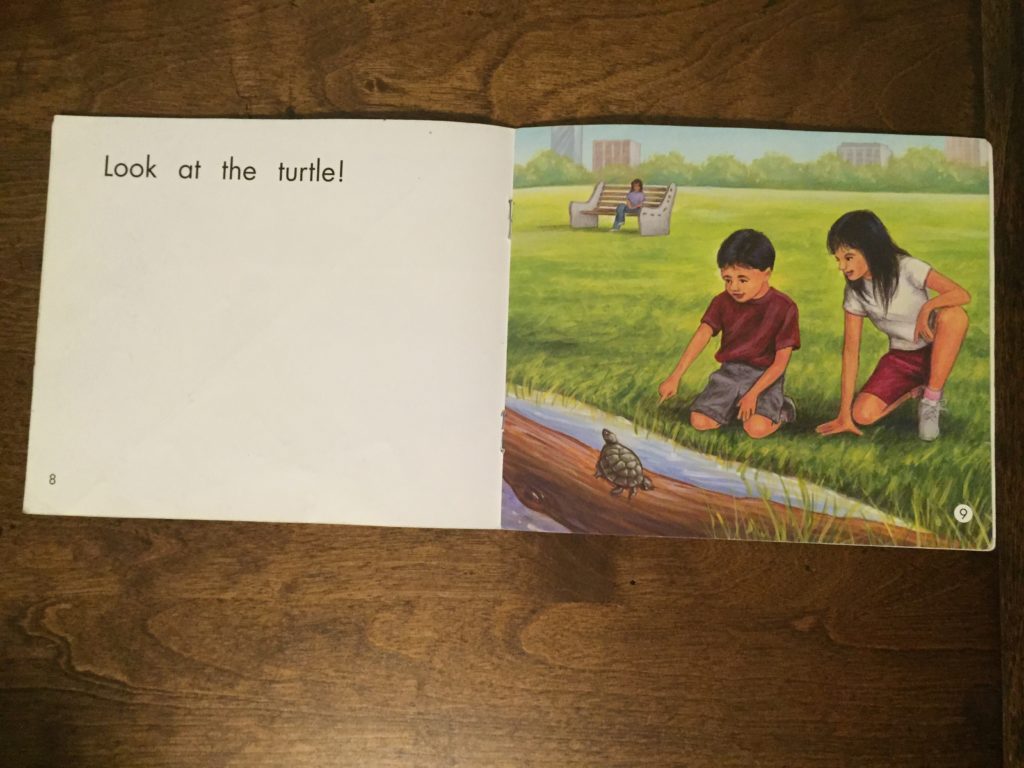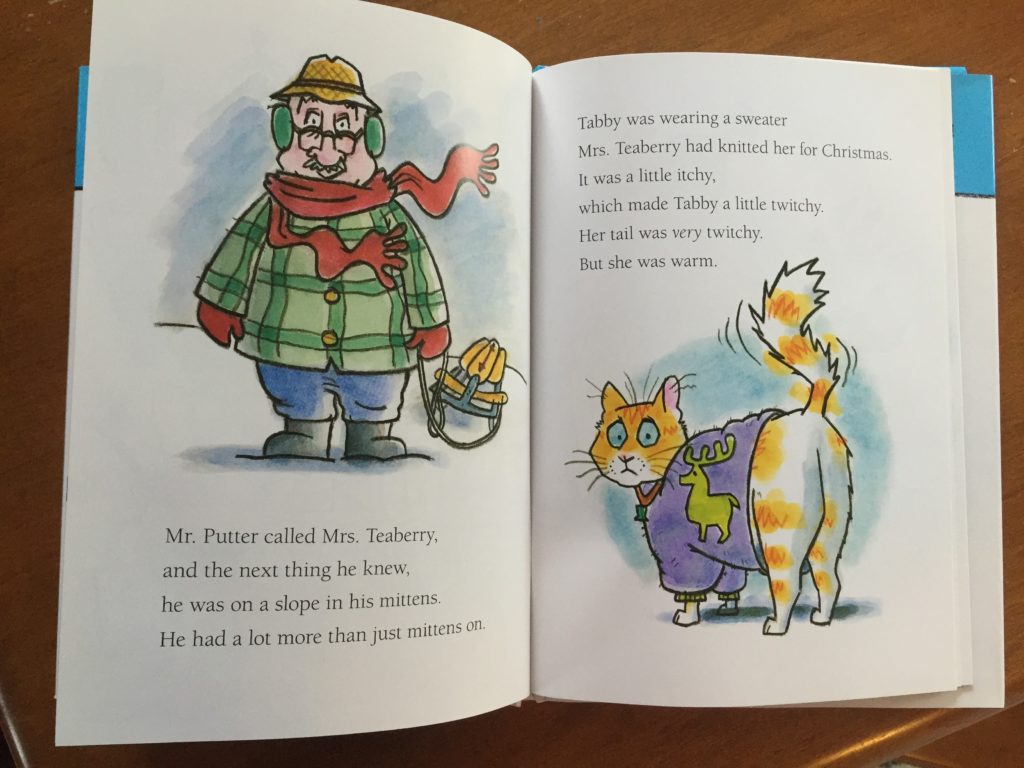In 2012, after opening a turnaround charter school that prioritized students zoned for failing schools, I assessed a group of 60 first graders, along with their teachers, and found that more than 80% of them were pre-emergent and unable to read a Level A text. With an eager and hardworking team of educators, we got to work. We split the students into leveled groups, arranged our schedules to prioritize guided reading, and began to inundate them with concepts like the alphabetic principle (relationships between sounds and letters), looking across lines of print from left to right, one to one correspondence, and matching the picture to the beginning sound. We were determined to tackle Level A books. And we did. But then we hit a roadblock.
At first our approach seemed perfect. I vividly remember pulling a group of students to read At the Pond — a constructed Level A book with the pattern “Look at the ____” and pictures of turtles, boats, and more. After pre-teaching the words “look,” “at,” and “the” and doing a picture walk to name what was in each picture, my non-readers were ready. As they read “Look at the turtle;” “Look at the boat,” I reminded them to slow down, finger point, and double-check the picture. At the end, Brianna, one of the students, exclaimed “I read a whole book! I never did that before!”
However, as our reading goals grew, and in an effort to help a group of below-level readers catch up in an accelerated timeframe, we found ourselves stalling. The skills they were learning — recognizing sight words, identifying simple, repetitive language patterns, recognizing a letter and cross checking with the picture — didn’t serve them very long. The text-specific word work we did before reading set them up to read that text, but there was no guarantee it would support them for the next text, even as we worked overtime to order, print, and color copy new leveled texts. The texts we were using, which were from leveled reading programs, weren’t in any way aligned to the basal program’s phonics and phonemic awareness sequence we were teaching. Our readers who were already behind were learning to master one strategy only to have the game change on them as we attempted to move them to higher-level texts. They needed a broader set of skills they could apply to each new text they encountered.



The English language is not one hundred percent regular, but there are many regular spelling/sound patterns. These patterns can be taught explicitly, and a clearly organized scope and sequence for teaching is the basis of most phonics programs. Structured phonics programs provide more than a clear sequence of skills, student tasks, and teacher lessons, however. When done well, they also allow for opportunities for students to regularly read texts that support these lessons, and for teachers to assess mastery. This allows for a sequence of teaching, monitoring, assessing, and reteaching that ensures that students are making adequate progress.
In their paper on Structured Phonics, David Liben and David Paige identify several things that a structured phonics program should do:
- Introduce students to spelling/sound relations separately, explicitly, and gradually.
- Allow teachers to monitor progress. By introducing spelling sound patterns one at a time, teachers can more easily tell which students have mastered which patterns and also provide the support needed so that mastery can be attained.
- Addresses words’ phonology (how to pronounce it), its orthography (how to spell it), and its morphology (what prefixes, roots, and suffixes it contains), explaining how to apply this knowledge to decode and spell words.
- Guide text selection. Since the teacher knows exactly which spelling/sound patterns currently are being taught and which already have been taught, she can select the most appropriate texts for her students to read
Language follows rules. There are 44 sounds in the English language, including consonants with more than one sound (c as in cat and c as in cease), short and long vowels, and sounds that can be made by different combinations of letters (the short e sound in bet and bread; the f sound spelled gh in laugh, ph in phone, or just f in fickle). Learning these rules systematically and practicing them in a controlled context (decodable readers) allows students to stabilize their knowledge base, saving the problem solving for words that break these rules once they’ve learned them. That being said, the emphasis should not be on learning the rules, but rather working with them in context — (texts and out-of-context scenarios (lessons, games, dictation).
Let’s consider my first graders for a moment more. Starting their reading journey with patterned books that matched pictures to words gave them a shortcut to read a given book, but did nothing to close the skills gap that was widening for them.
As educators, it is our job to close the gaps that students have when they enter school– and to do so quickly so that the gaps don’t intensify over time. Our first graders, kindergarteners, and all of our students do need to develop flexibility: to be able to ask themselves questions as they read, to self-monitor, and to use problem-solving strategies. This development, however, has to accompany learning the rules of the English language. Since there are variations in interest and ability across children–case in point, my two-year old son hasn’t slowed down long enough to even begin to notice concepts of print or left-to-right reading like his older sister did when she was his age!–a systematic approach does nothing to undermine or restrict the skills of more proficient students and can make all the difference for those with the highest academic needs. And yet, I’ve seen educators diminish the need for a strong foundational skills program, or dismiss controlled phonetic readers as inauthentic. If this resonates with you, and you are serving high-needs students, I ask you to reframe your thinking. Hook your students on reading through a robust and high-quality read aloud, engage their minds and build their knowledge and vocabulary through in-depth study of conceptually connected topics, and give them the keys to the sound/spelling code. What doors might you open for your students by allowing them the keys?
The full research report, Why A Structured Phonics Program is Effective, by David Liben and David D. Paige, is attached at the top of this article. See the report for further research and analysis.


















Hello Carey,
I love your article. As I’m struggling with direction in our old Storytown Reading program with exactly the same issues you referenced here and hoping to find direction, yet basically ready to quit my ELA Committee due to a lack of commitment from others and huge doubts In which way to go …etc. I have a few questions please…
Im beginning to see how/why to separate phonics and comprehension and how to teach the thinking skills, vocabulary through read alouds, yet sounds, fluency and sight words through phonics and decodable ….
1. Is the text set approach for whole group Comprehension, vocabulary instruction then and not so much for fluency?
2. For Gr 1 should we use a structured phonics program for whole group phonics, etc and fluency with decodables then?
3. When do we differentiate? ( not all need explicit phonics if some are reading? ) During guided reading in small group?
4. Should we track individual growth with a program like Reading A to Z?
5. Do you assess weekly ?
Do you still use dibels passages?
I’m so confused.
Thank you,
Petrice Ussia
Hi Petrice! So many good questions. Let me take a stab at the ones I think I can answer well!
1) Text sets can be used in a variety of ways– for whole class knowledge building, or small group instruction, or independent reading. Usually text sets are meant to build knowledge and vocabulary. While fluency can be done with any text, in the early grades I’d spend more time on decodables for fluency practice.
2) Yes- in grade 1, you want to use a structured phonics program for the whole class. Decodables can be used whole class, with extra follow up for students who need more support.
3)Phonics skills progress quickly, so some whole class teaching time is important, and chance for all kids to practice with connected decodable text. Small group time is a chance to fill in skills not yet mastered- I recommend using small group instruction time for phonics or decodables for students who aren’t making progress. Some of your readers won’t need this at all, and they can read other texts or do related tasks at this time.
4. Tracking phonics progress, and then building towards fluency, is going to be the most meaningful early reading data. I don’t know RAZ’s individual growth tracking systems, but I recommend using a checklist to track progress and giving a quick assessment, like a dictation, on a weekly basis, to inform small groups the next week.
Lots of related information found here, including an assessment protocol, that might be helpful! https://achievethecore.org/category/1206/ela-literacy-foundational-skills